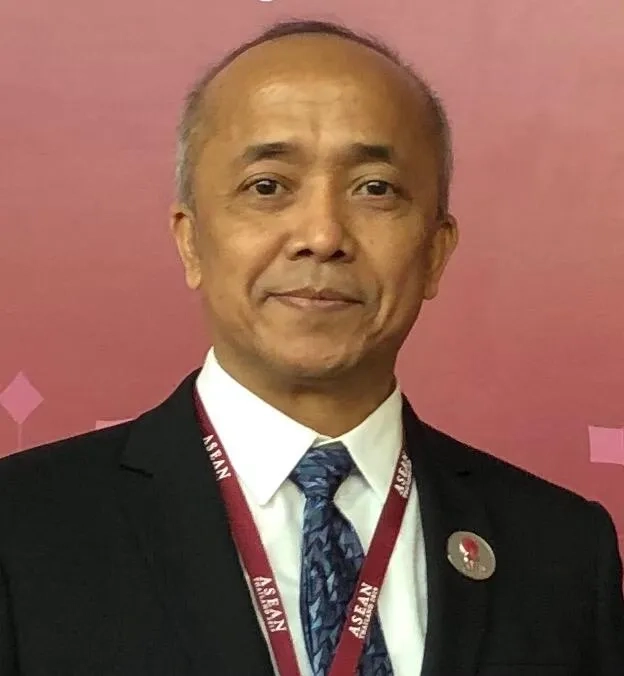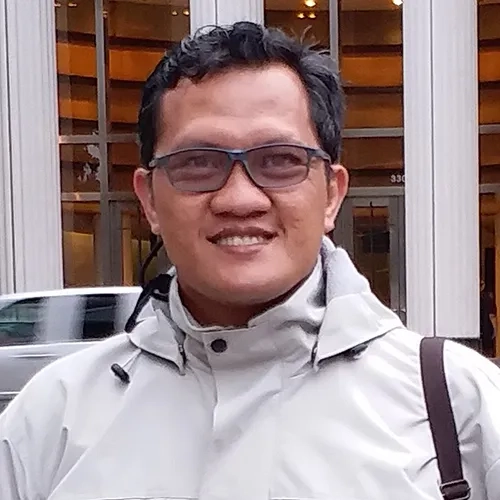Indonesia’s mining industry is driving future economic growth by leveraging innovative geospatial technology.
In this special interview, Dr. Muhammad Wafid A.N. from the Ministry of Energy and Mineral Resources, Firman Setiabudi from PT. Freeport Indonesia, and Khairul Amri from Esri Indonesia, answer questions from the user community on how geospatial technology can aid sustainable mining production.
Dr. Muhammad Wafid A.N., Director of Development Program – Mineral Resources and Coal | Ministry of Energy and Mineral Resources, Indonesia
Q. Are there plans to synchronise data from the existing geoportal features with data from other ministries (such as the Ministry of Environment and Forestry)?
A. There is a plan in the future to integrate the data with other ministries, but we must first overcome the challenges of synchronising the platform internally. For now, we are concentrating on aligning all existing applications in Mineral and Coal, and the data centre (Pusdatin). We are working to make big data available for mining in the future so it will be easier for us and investors to study and analyze mineral and coal commodities.
Firman Setiabudi, Superintendent Geographical Information Services | PT. Freeport Indonesia
Q. What computer and internet infrastructure requirements are used in the Freeport GIS Portal to allow it to handle the large data files such as drone updates, topography and other real-time data?
A. It required relatively high specifications, which was determined by two parameters. The first was to ensure the system met the minimum requirements for ArcGIS Server. The data-sensitivity wasn't too high, so we could use a cloud system. It was important to use ArcGIS Online with an enterprise scheme so infrastructure problems could be resolved, and system stability maintained. The most critical element for ArcGIS Online was the quality and reliability of the internet connection.
The second infrastructure specification parameter was the data itself. We had volume datasets at IMK Gold, different types of data to be managed – such as Raster, Vector, online processing and database-connection – as well as data management that still needed to be built. A lot of data needed to be updated live online, so the infrastructure needed to be more complex than a GIS dashboard, which uses a lot of statistical information. The compression system in Web GIS and ArcGIS Portal proved very helpful in managing big data, including massive raster data.
Q. Since Freeport is located remotely and underground, how do you maintain the data to keep it in real time?
A. PT. Freeport Indonesia uses ArcGIS Server in a closed and limited corporate intranet using a relatively fast intranet connection. All areas of our mining operations have built a good network connection infrastructure. Real-time and near real-time data that connects to our Web GIS Portal System comes from two methods:
- Using a data scheduler: As the technology was developed more than 10 years ago, this method is very basic – the required data is scheduled to be harvested (copied) to a specific table. The scheduler can also execute several scripts (VB or Python) at once. The data will then be used to update contextual information according to the frequency of the scheduler.
- Feeding input data from another database system: Web GIS Portal is connected with another database system to synchronise data. Web GIS can update datasets into the system according to its database-connection setup.
Khairul Amri, Solution Strategist Manager | Esri Indonesia
Q. The geotech observations demonstrated in your presentation showed a 3D model. Are the points installed in the field? If so, what is the shape of the point and what methods are used to observe plate movement?
A. ArcGIS does not manage the acquisition process for 3D. It reads and processes data, and analyzes and visualizes it for web, desktop or mobile. Some organizations have their own laser scanners that generate LiDAR (weld) data. The LiDAR data is what we then process in ArcGIS.
For more information on GIS solutions for the mining industry, book a meeting with a consultant to learn how to leverage the platform.



